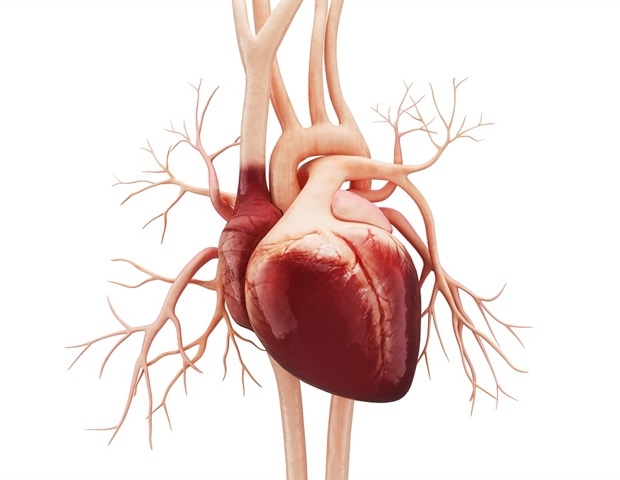Report on Gender Disparity in Lung Transplantation and its Implications for Sustainable Development Goals
Executive Summary
A recent study by UCLA Health has identified persistent gender-based disparities in access to lung transplants within the United States. Despite recent policy changes designed to promote equity, women continue to receive lung transplants at a lower rate than men. This inequality directly challenges the principles of several key United Nations Sustainable Development Goals (SDGs), particularly those concerning health, gender equality, and institutional justice.
Analysis of Key Findings
The research highlights systemic barriers and the limited success of corrective policies in achieving equitable outcomes. The disparity is rooted in a combination of biological and systemic factors.
Barriers Faced by Female Candidates
- Biological Factors: Women often have a smaller physical size, which reduces the pool of size-matched donor lungs.
- Immunological Factors: A higher likelihood of developing antibodies from prior pregnancies, blood transfusions, or autoimmune conditions complicates organ matching and acceptance.
Evolution of Allocation Policies
- Lung Allocation Score (LAS) System (2005): This initial system prioritized candidates based on medical urgency but did not adequately account for the unique biological disadvantages faced by women.
- Composite Allocation Score (CAS) System (March 2023): Implemented by the Organ Procurement and Transplantation Network (OPTN), this revised system incorporated additional variables such as height and immune sensitivity to create a more equitable matching process.
Statistical Disparity
- Pre-CAS System: Female candidates were 32% less likely than male candidates to receive a lung transplant.
- Post-CAS System: Following the policy change, the gap narrowed but was not eliminated. Women remain 16% less likely to undergo transplantation.
Alignment with Sustainable Development Goals (SDGs)
The persistence of this disparity underscores challenges in meeting global development targets.
- SDG 3: Good Health and Well-being: The inequitable access to life-saving transplants for women is a direct barrier to achieving universal health coverage and ensuring healthy lives for all.
- SDG 5: Gender Equality: The findings represent a clear case of gender-based inequality in a critical area of healthcare, demonstrating that systemic biases prevent women from attaining equal health outcomes.
- SDG 10: Reduced Inequalities: The continued gap, despite policy interventions, highlights a failure to reduce inequality of outcome. It emphasizes the need for more robust measures to ensure equal opportunity for all individuals within health systems.
- SDG 16: Peace, Justice and Strong Institutions: This issue calls for the strengthening of healthcare institutions like the OPTN to ensure they are fully effective, accountable, and inclusive. Dr. Abbas Ardehali’s call for “further refinements” aligns with the goal of building just systems that serve all patients fairly.
Conclusion and Recommendations
The study concludes that while the implementation of the CAS system marks a modest improvement, significant gender disparity in lung transplantation access remains. To align with the global commitments outlined in the Sustainable Development Goals, further refinement of organ allocation policies is imperative. Ensuring a fair and effective system for all patients, regardless of gender, is essential for promoting health equity and strengthening the integrity of healthcare institutions.
Reference Information
- Source: University of California – Los Angeles
- Journal Reference: Cho, P. D., et al. (2025). Gender Disparity in Lung Transplantation in the Pre- and Post-Composite Allocation Score System. The Annals of Thoracic Surgery.
Analysis of Sustainable Development Goals (SDGs) in the Article
1. Which SDGs are addressed or connected to the issues highlighted in the article?
-
SDG 3: Good Health and Well-being
The article directly addresses health by focusing on access to lung transplants, a critical life-saving medical procedure. The discussion revolves around the barriers and inequities within the healthcare system that affect patient outcomes.
-
SDG 5: Gender Equality
The core issue of the article is the gender disparity in organ transplantation. It explicitly states that “women continue to face barriers in accessing lung transplants compared to men” and quantifies this inequality, making gender equality a central theme.
-
SDG 10: Reduced Inequalities
This goal is relevant as the article highlights inequality in health outcomes based on gender. The research discussed aims to identify and reduce the systemic disparities that prevent equitable access to organ allocation for all patients, “regardless of gender.”
2. What specific targets under those SDGs can be identified based on the article’s content?
-
SDG 3: Good Health and Well-being
- Target 3.8: Achieve universal health coverage, including… access to quality essential health-care services… for all. The article’s focus on the unequal access to lung transplantation, an essential healthcare service, directly relates to this target. The disparity shows that access is not yet universal or equitable.
-
SDG 5: Gender Equality
- Target 5.1: End all forms of discrimination against all women and girls everywhere. The article describes how “biological and social factors” and systemic issues in organ allocation policies result in a significant disadvantage for women, which can be seen as a form of systemic discrimination in healthcare access.
- Target 5.c: Adopt and strengthen sound policies… for the promotion of gender equality. The article discusses the implementation and impact of policies like the Lung Allocation Score (LAS) and the Composite Allocation Score (CAS), which were designed to make organ distribution “more equitable.” The finding that inequities remain points to the need to “further refine” these policies, directly aligning with this target.
-
SDG 10: Reduced Inequalities
- Target 10.2: By 2030, empower and promote the social… inclusion of all, irrespective of… sex. The article addresses the lack of inclusion for women in equitably accessing lung transplants, a critical health resource.
- Target 10.3: Ensure equal opportunity and reduce inequalities of outcome, including by eliminating discriminatory… policies and practices. The article directly addresses an “inequality of outcome” (receiving a transplant) and analyzes the policies (CAS) aimed at reducing this disparity. The research calls for “further refinements to the scoring system to ensure a fair and effective organ allocation system for all patients.”
3. Are there any indicators mentioned or implied in the article that can be used to measure progress towards the identified targets?
Yes, the article provides specific quantitative indicators that can be used to measure progress:
- Rate of organ transplantation, disaggregated by gender: The article explicitly uses this as its primary indicator. It states that before the policy change, “women were 32% less likely than men to receive a lung transplant.” This figure serves as a baseline measurement of the inequality.
- Change in the gender disparity gap following policy intervention: The article measures the impact of the new CAS policy by reporting that after it was implemented, “women were 16% less likely to undergo transplantation.” The reduction from a 32% to a 16% disparity is a direct indicator of progress, although it also indicates that the goal has not yet been fully achieved.
- Adoption and refinement of equitable allocation policies: The implementation of the “Composite Allocation Score (CAS) system in March 2023” is an indicator of action being taken. The call for “further refinements to the scoring system” implies that the ongoing development and improvement of these policies is a key measure of commitment to reducing inequality.
4. Table of SDGs, Targets, and Indicators
| SDGs | Targets | Indicators |
|---|---|---|
| SDG 3: Good Health and Well-being | 3.8: Achieve universal health coverage and access to quality essential health-care services for all. | The rate of access to lung transplants, as a specific essential health service. |
| SDG 5: Gender Equality | 5.1: End all forms of discrimination against all women.
5.c: Adopt and strengthen sound policies for the promotion of gender equality. |
The percentage difference in the likelihood of receiving a lung transplant between men and women (reported as 32% pre-CAS and 16% post-CAS).
The implementation and revision of organ allocation policies (e.g., the move from LAS to CAS). |
| SDG 10: Reduced Inequalities | 10.2: Promote the inclusion of all, irrespective of sex.
10.3: Ensure equal opportunity and reduce inequalities of outcome. |
The measured gap in transplant probability between genders, which represents an inequality of outcome. The reduction of this gap from 32% to 16% indicates progress toward reducing this inequality. |
Source: news-medical.net







